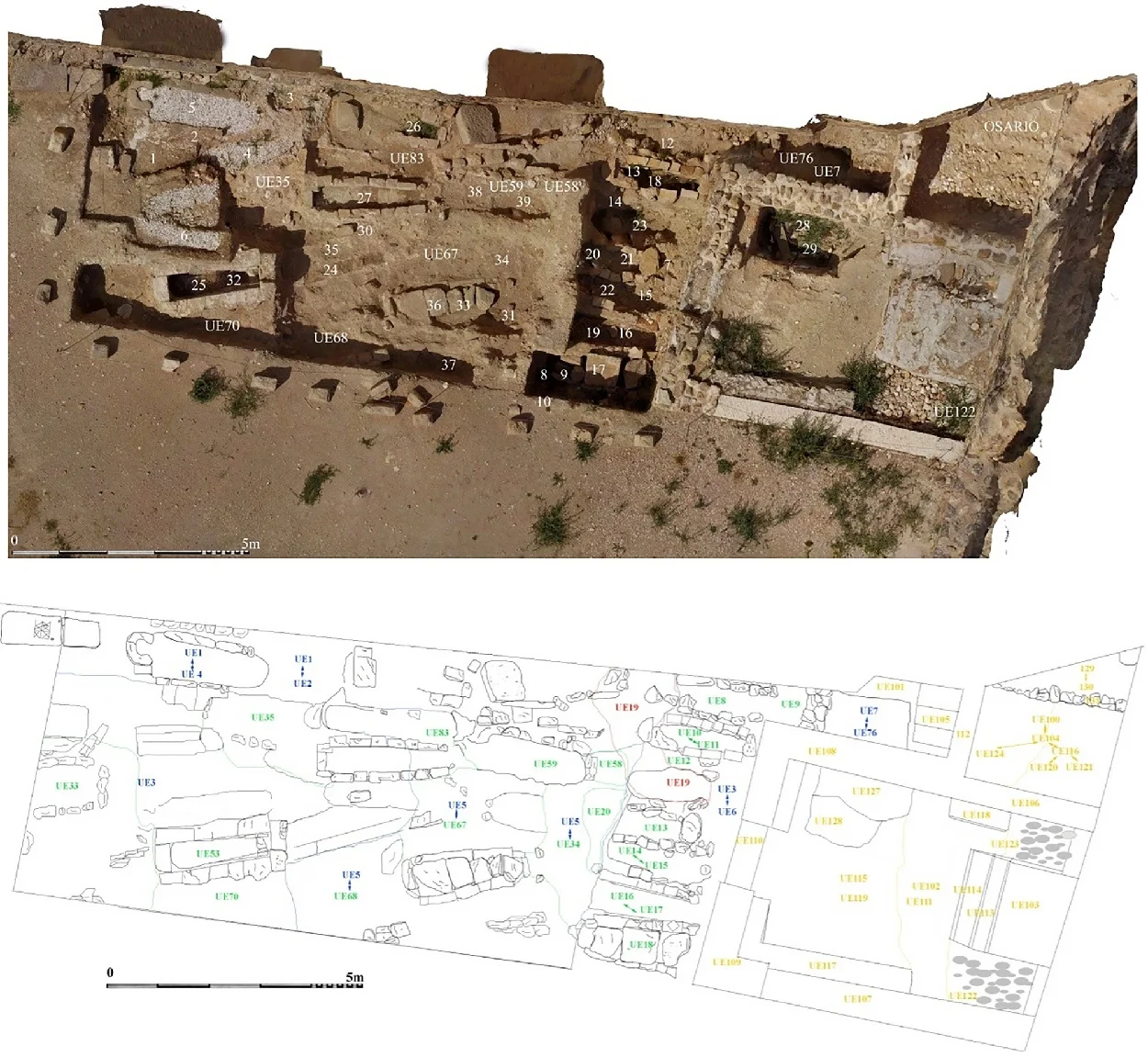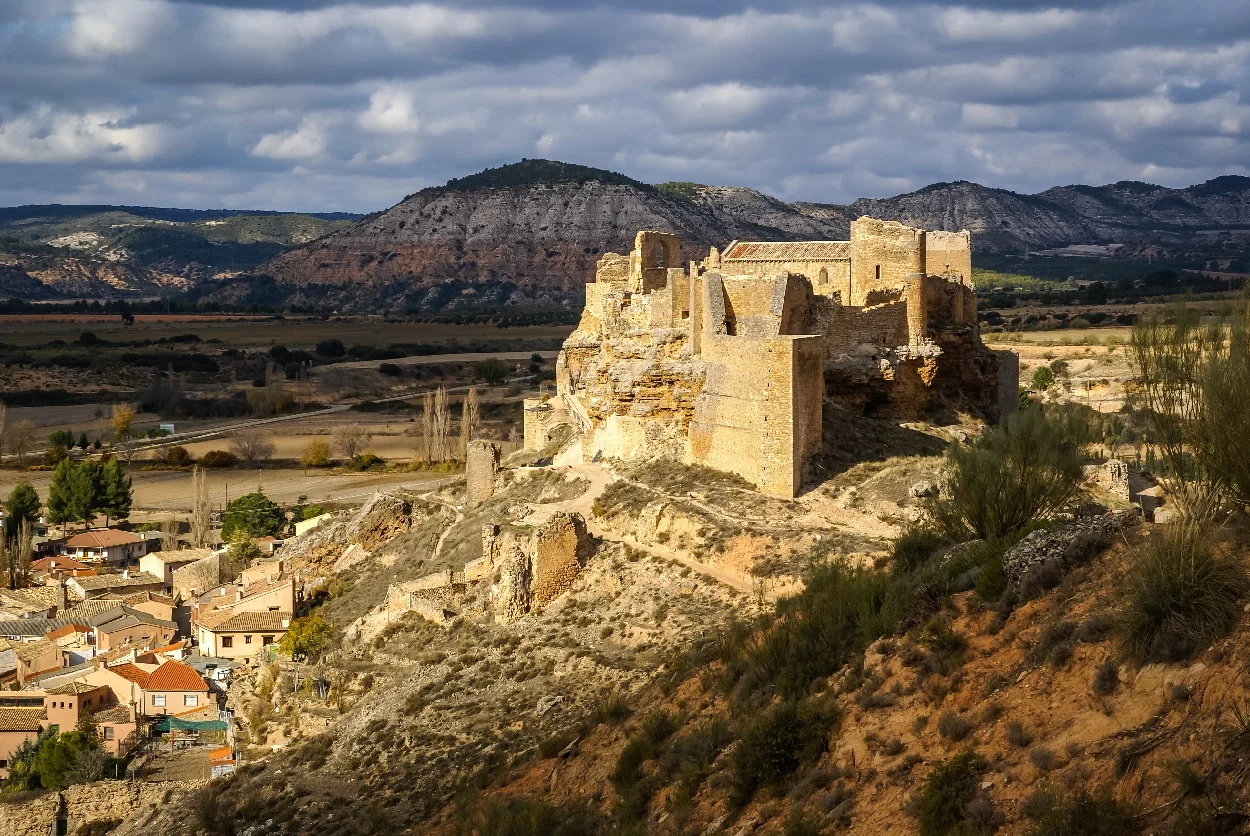A study led by archaeologists from the Universitat Rovira i Virgili (URV) and the Max Planck Institute has found a female burial among the remains of 23 warrior monks of the Order of Calatrava in Guadalajara.
The Order of Calatrava was one of the four Spanish military orders and the first military order in Castile. The order was founded as a military branch of the Cistercian family at Calatrava la Vieja in Castile during the 12th century by St. Raymond of Fitero.
The burials were exhumed in a cemetery associated with the Castle of Zorita de los Canes-Alcazaba de Zorita, a large fortress in the Province of Guadalajara in Spain’s autonomous community of Castilla–La Mancha.
The castle was first built by the emir Muhammad I of Córdoba in the year 852 to defend the passage of the Tagus river through the Santaver cora. In 1174, Alfonso VIII of Castile granted the fortress of Zorita to the newly established Order of Calatrava, which continued to use it as a stronghold against Almohad incursions.

According to the study, published in the journal Scientific Reports, the 23 warrior monks were knights of the order that died in battle between the 12th and 15th century. A total of 25 skeletons were exhumed, with 23 showing signs of penetrating puncture wounds and blunt force injuries, suggesting they died a violent death.
Carme Rissech, a researcher from URV, said: “We have observed many injuries on the upper part of the skull, on the legs and on the inside of the pelvis (of the coxal bone), which agrees with the hypothesis that they are warriors.”
The remains of a woman were also found among the burials, showing injuries that suggest she died in a similar manner.
“The morphology of the bones of the face, the birth canal, and inside the pelvis, are the most obvious examples,” explains Rissech. In some individuals, these differential attributes may not be decisive when making a sexual identification, but these remains leave little margin for error. Who was that woman? Was she part of the order? Did she have the same status as the other knights?”
Researchers from the University of Barcelona and the archaeologists who directed the excavations also participated in this study. The research is part of the MONBONES project, which seeks to offer a new historical perspective on the way of life, diet, health, economy and society in monastic contexts from the 14th to the 19th centuries from a multidisciplinary perspective (zooarchaeology, anthropology, documentation and molecular analysis).
Header Image Credit : Shutterstock
Sources : Universitat Rovira i Virgili (URV) | Pérez-Ramallo, P., Rissech, C., Lloveras, L. et al. Unraveling social status in the first medieval military order of the Iberian Peninsula using isotope analysis. Sci Rep 14, 11074 (2024). https://doi.org/10.1038/s41598-024-61792-y





